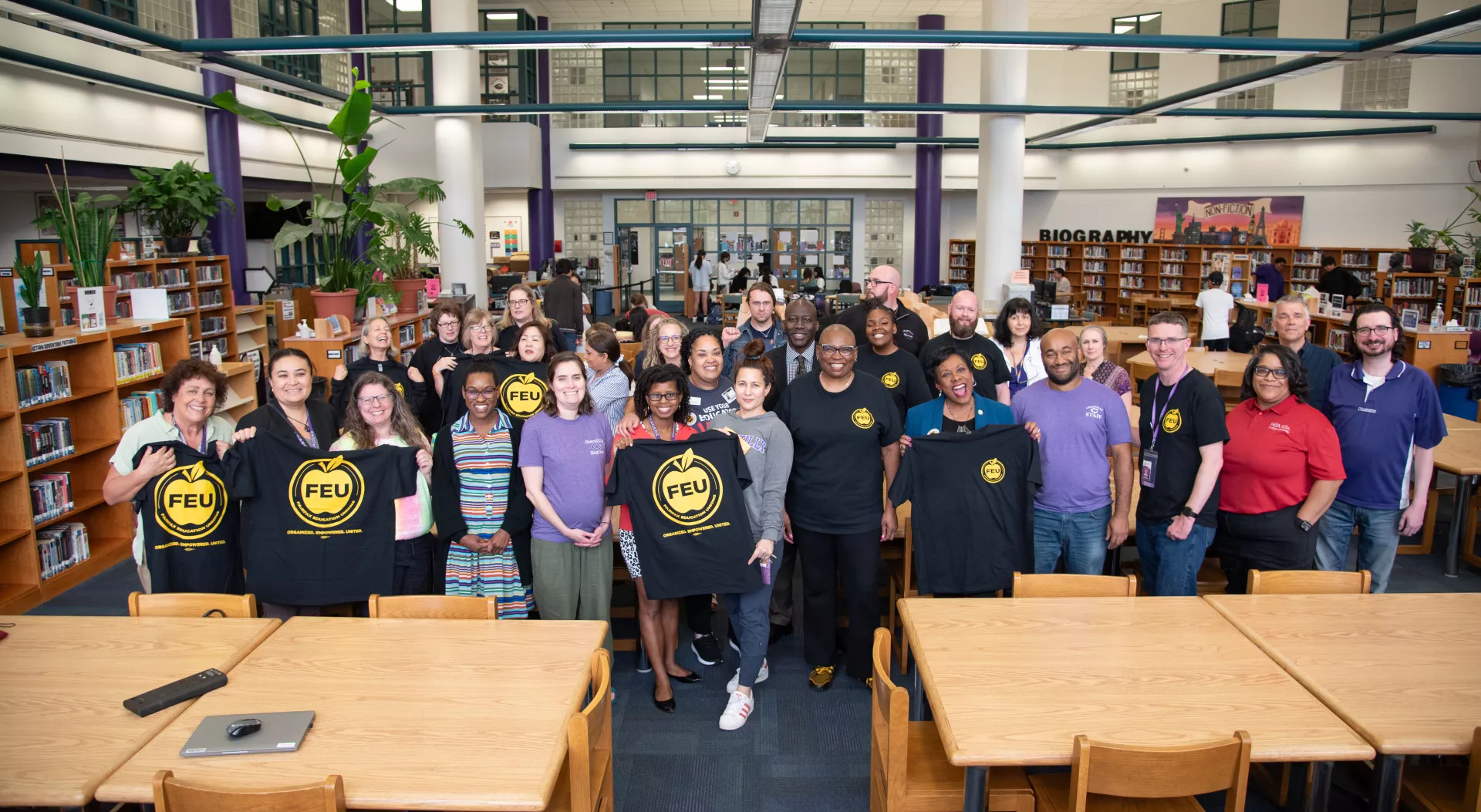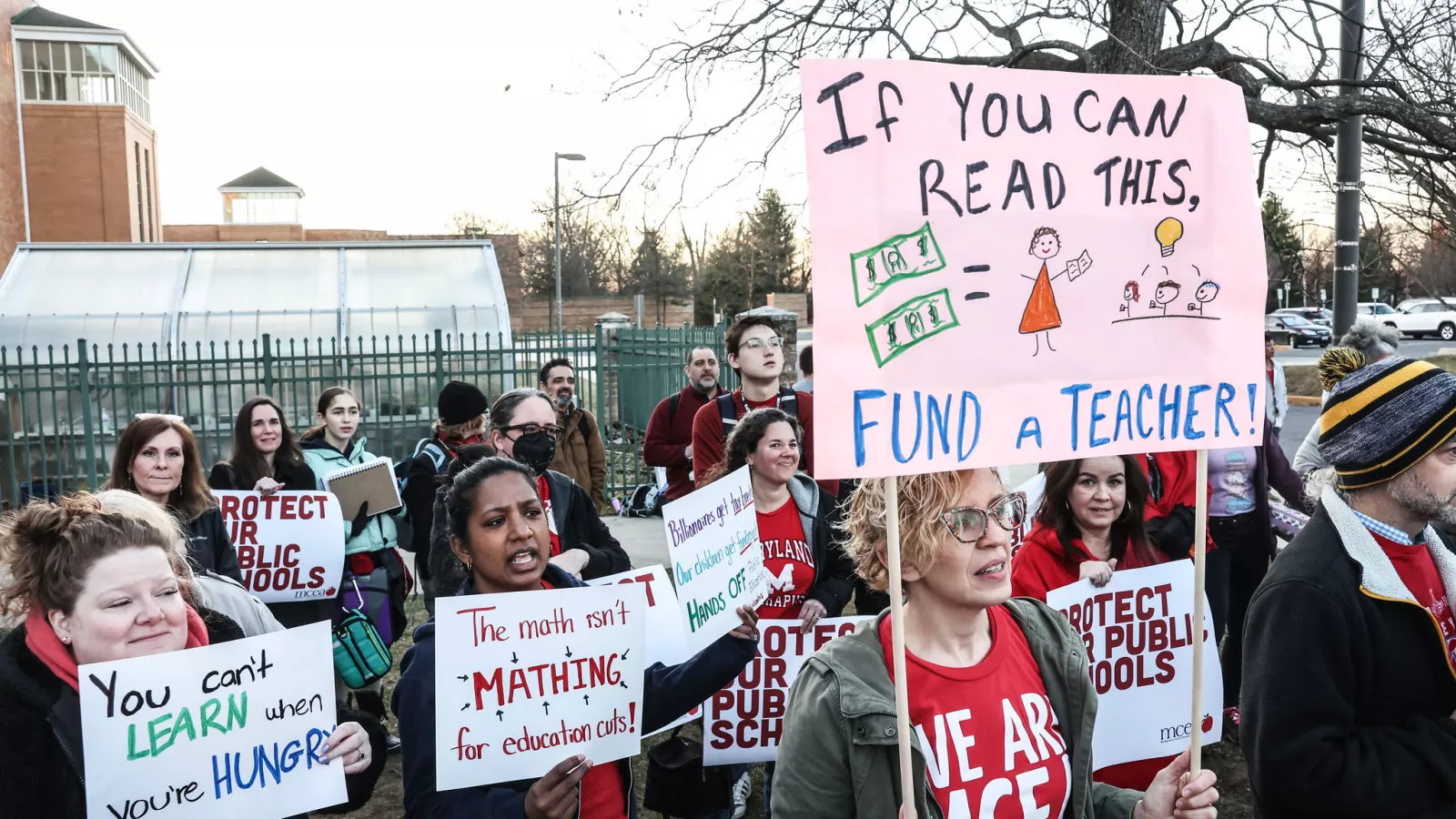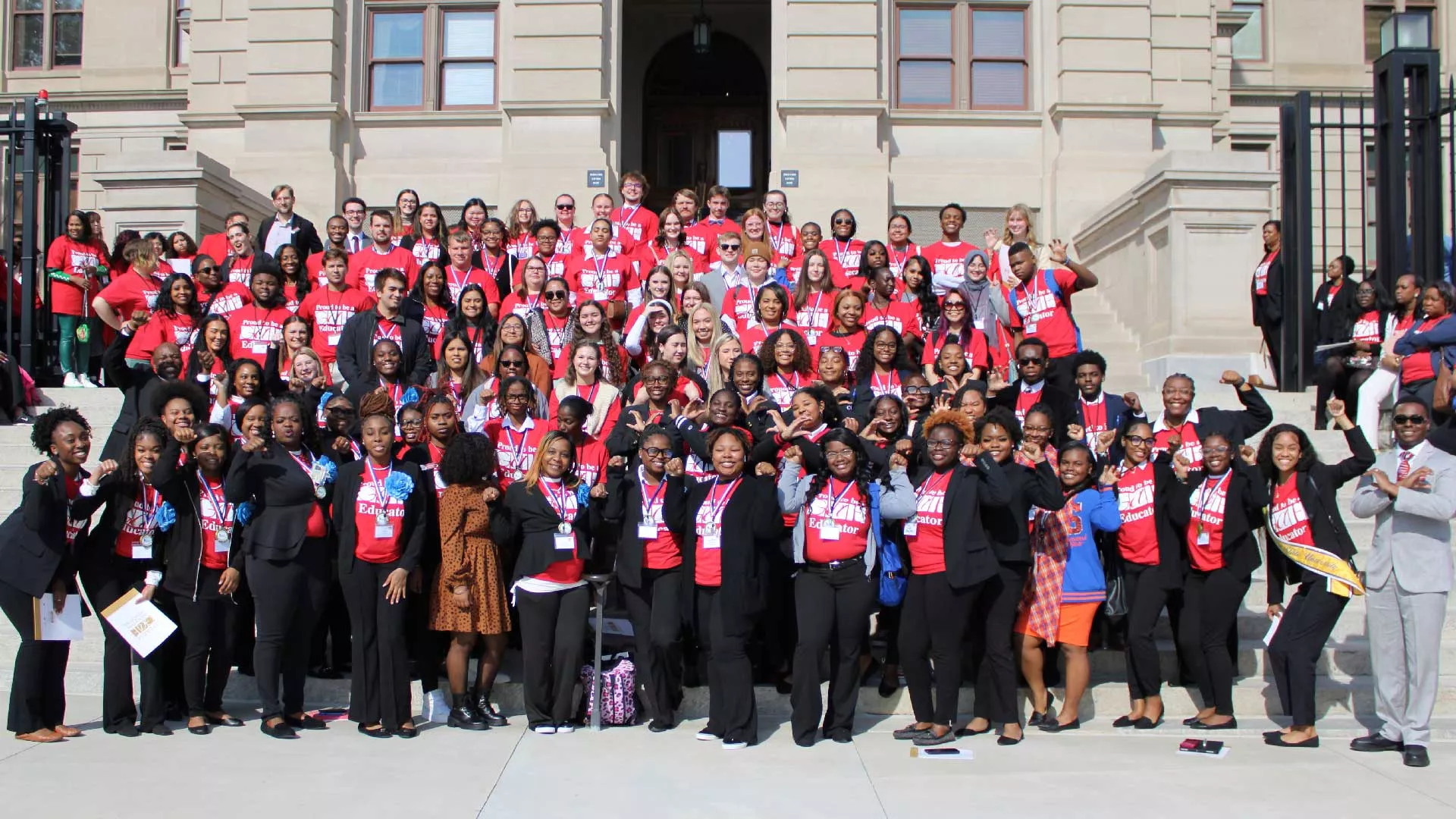Key Takeaways
- Since Virginia enabled collective bargaining by public employees in 2021, a wave of union elections has led to increased rights for educators.
- In Fairfax, 97 percent of teachers voted for representation by Fairfax Education Unions, an alliance of the two major unions in the county.
- Through collective bargaining, educators hope to improve wages, benefits, and working conditions.
Every day for at least the past two or three months, Leslie Houston has woken up at 4 a.m. to first spend a little time with God and then get on the phone with Fairfax Education Association members. By 6 a.m., she’s rolling in her “mobile office,” i.e., her pickup truck, to school parking lots to meet with Fairfax County, Virginia, teachers, custodians, and other educators.
Her message? The time is now to change your life.
And yes, they heard her.
Educators in Virginia’s largest school district voted this week to become one of the biggest bargaining units on the East Coast, enabling the Alliance of Fairfax Education Unions (FEU) to improve wages, benefits, and working conditions for roughly 27,000 Fairfax County Public School (FCPS) workers.
In an election that ended Monday, 97 percent of voters in FEU’s instructional unit—teachers, school librarians, counselors and other instructional employees--chose FEU as their bargaining agent, setting the stage for their contract to be collectively bargained in the months ahead. Meanwhile, 81 percent of voters in FEU’s operational unit--school bus drivers, custodians, cafeteria workers, instructional assistants, and others- also selected FEU.
It’ll be the first time in nearly 50 years that workers in Fairfax County have had the right to collectively bargain—and they are thrilled!
“In the words of Frederick Douglass, ‘Power concedes nothing without a struggle,’” said Houston, when the vote was announced. “For close to 50 years, FCPS employees have struggled to have a stronger voice in the workplace. Now, those desires have become a reality. This win will be transformative for both instructional and operational employees. Our efforts will be focused on securing fair compensation and living wages for all. Collective bargaining will be the springboard to much needed improvement for the generations of children in Fairfax County.”
Who They Are
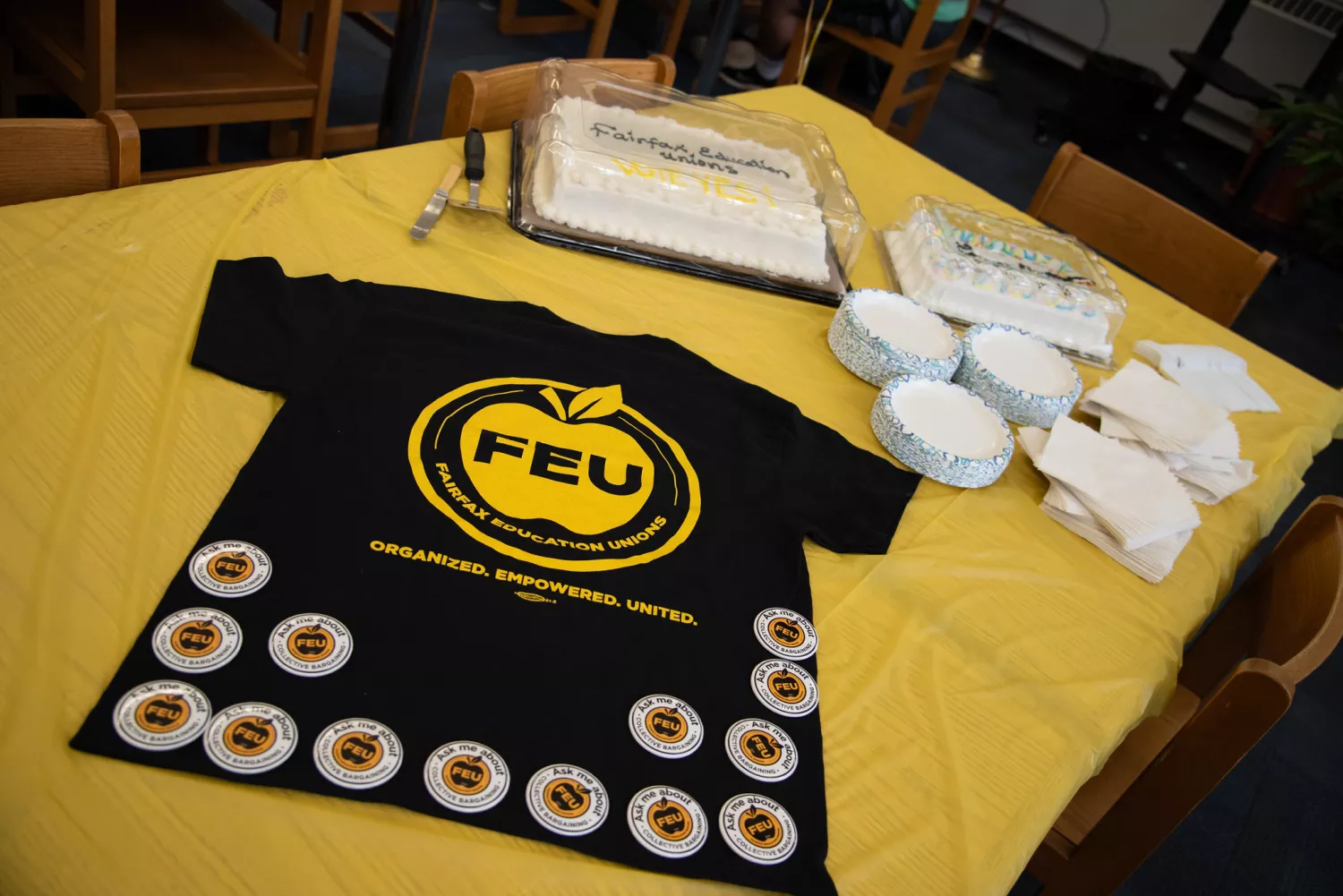
FEU consists of members from two powerful education unions: the NEA-affiliated Fairfax Education Association and the Fairfax County Federation of Teachers, an affiliate of the American Federation of Teachers. It is a partnership or alliance, aimed at multiplying the power of union members.
For years, Fairfax educators have struggled with the same issues that make it hard for educators all over the nation to support students. These include cuts in funding; rising class sizes; a lack of planning time; increasing mental-health issues among students; and pay that hasn’t kept up with the rising costs of living.
Not long ago, during a quick trip to the local mall, Houston ran into a friend who works as a Fairfax instructional aide. But unlike Houston, her friend wasn’t shopping—she was working her second job.
“In the United States, in 2024, somebody who teaches our children, who works in the school system, should be able to live on one job in education!” says Houston. “I have people living in apartments with four other families because they can’t make ends meet. That is not okay. Not when you are educating children!”
Currently, instructional assistant (IA) pay in Fairfax starts at $28,008 a year. That’s less than half of a living wage for a single person without kids in Fairfax County, which is one of the most expensive places to live in the country. “I want to make sure IAs get paid a living wage. They’ve been at the bottom for so long,” says Houston. “I want to see custodians get paid and not have to work in the summer heat because the district won’t turn on the air conditioning! We have public health attendants—these are people who help our most medically fragile kids go to the bathroom—getting paid $24,651!”
She continues, “Here’s what I say: If you take care of the people who are taking care of the children, the children will always be taken care of.”

The Road to Collective Bargaining
Until recently, public-sector workers in Virginia—like in a lot of Southern states—didn’t have the right to collectively bargain. In an attempt to limit worker power, the Virginia Supreme Court banned collective bargaining in 1977; then, in 1993, a state law codified the ban.
But in 2020, at the urging of Virginia Education Association members who rallied in Richmond and called on their lawmakers to do the right thing for educators and students, the Virginia General Assembly’s Democratic majority passed H.B. 582, overturning the ban and enabling school boards and counties to pass their own ordinances on collective bargaining.
“We lost this right 47 years ago and since then, about two and half generations of educators have come and gone and retired,” says Chuck Ronco, a Fairfax math teacher and FEA vice president. “Part of our work has been to answer the questions: what is collective bargaining and why does it matter?”
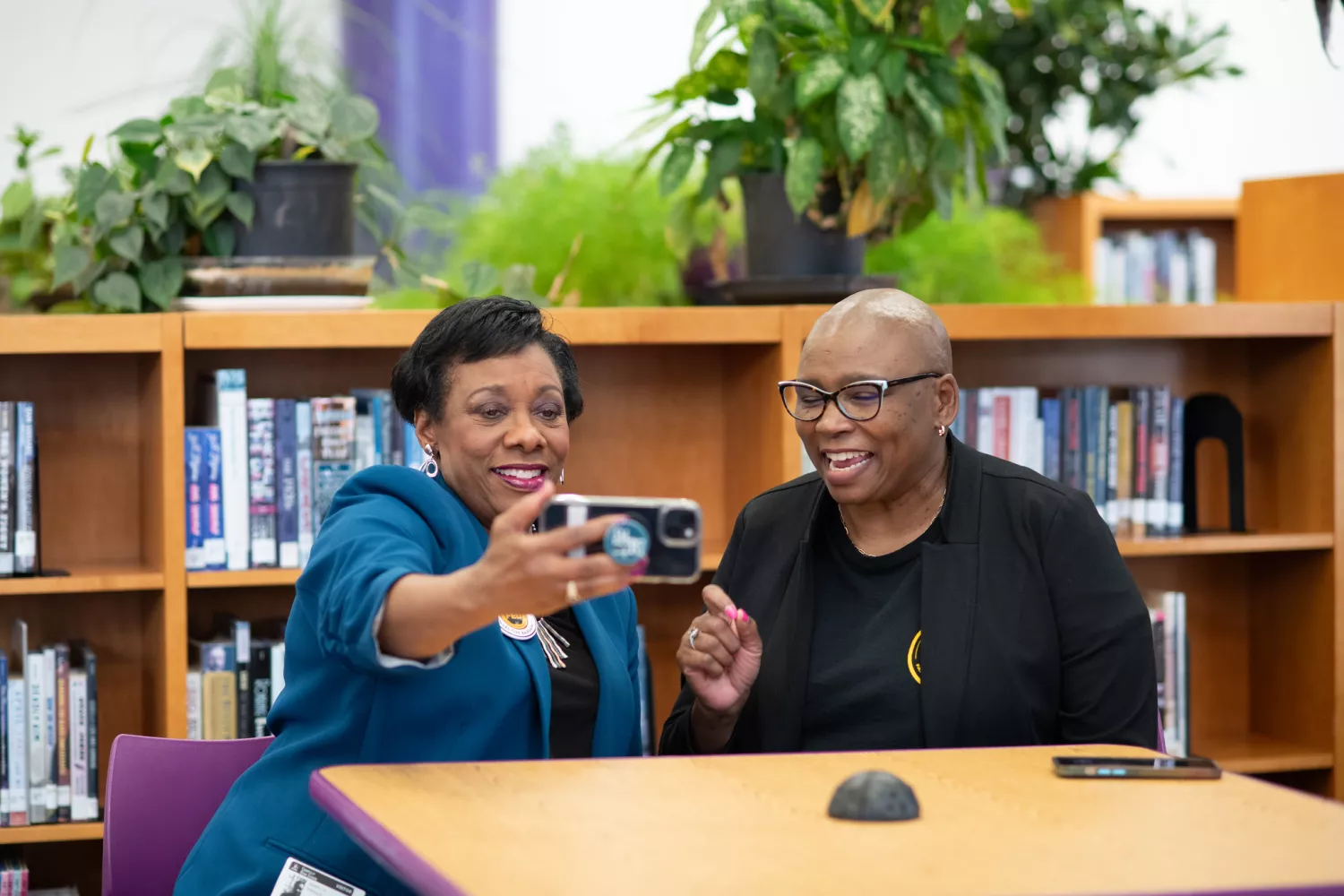
The new law went into effect in May 2021 and, in late 2021, Richmond educators became the first in the state with restored collective bargaining rights, followed by a wave of others across the state. In the last two years, local unions ranging from Montgomery County in southwest Virginia, to the state’s capital city of Richmond, to Arlington County, Prince William County, and the city of Falls Church, all in Northern Virginia, have ratified contracts.
Their wins at the bargaining table include: limits on meetings and protections for planning time; union leave; fair grievance procedures; additional pay for extra duties; flexible work locations for certain employees; and guaranteed duty free lunch,
“What we are witnessing is not a moment, but a movement,” says NEA President Becky Pringle, who met with Fairfax educators in recent weeks to talk with them about union power and their expanding role in advocating for the schools that Fairfax students deserve.
In spring 2023, the Fairfax school board passed its resolution, enabling collective bargaining. On May 1, International Workers Day, FEU presented thousands of union cards, signed by union members demanding an election. That election took place in early June and concluded with Monday’s massive win.
What’s Next?
Moving forward, FEU will have two bargaining units. One is the instructional unit, which includes teachers, counselors, school social workers, school psychologists, librarians, and speech language pathologists. The other is the operational unit, which will represent IAs, public health assistants, public health training assistants, cafeteria workers, custodial staff, transportation staff, and front office staff.
Among its first steps? FEU will survey educators about their “wants and needs,” says Ronco. Also, as an experienced math teacher, he will be working with a team of FEA members this summer, examining Fairfax’s budget for opportunities to save and spend. “I’m excited about that!” he says.
Fairfax’s superintendent and school board are friendly and supportive, says Ronco. But there is no substitute for a legally binding, collectively bargained contract. “It’s great to have a great school board and superintendent, but elections come and go and people retire. We need to make sure we have a legal basis, so that our rights are enshrined rather than just granted,” he says.

